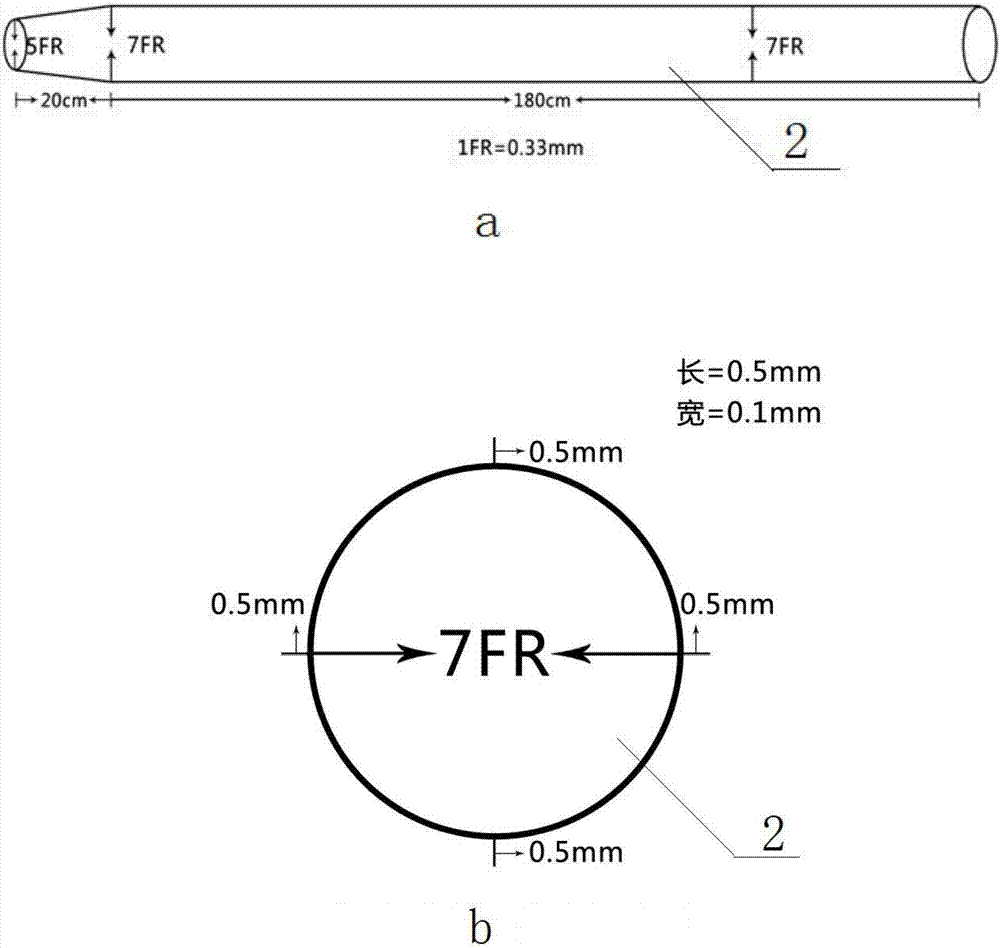Rotatable duodenal papillotome
A technique of duodenum and nipple, which is applied in the field of rotatable duodenal papillary incision knife, can solve the problems of low success rate, difficulty, and reduce the success rate of intubation, and achieves convenient operation, increased success rate, and successful high rate effect
- Summary
- Abstract
- Description
- Claims
- Application Information
AI Technical Summary
Problems solved by technology
Method used
Image
Examples
Embodiment Construction
[0015] The technical solutions of the present invention will be further described in detail below in conjunction with the accompanying drawings and specific embodiments.
[0016] refer to Figure 1-Figure 3 , a rotatable duodenal nipple incision knife, comprising an outer sleeve 1, an outer sleeve handle 2 and an incision knife 3, the incision knife 3 is located inside the outer sleeve 1, and one end of the outer sleeve 1 is provided There is an outer sleeve handle 2, and the outer sleeve 1 and the incision knife 3 are gear-shaped.
[0017] The outer sleeve 1 has a diameter of 9F, a length of 100 mm, and a thickness of 1 mm.
[0018] The diameter of the outer sleeve handle 2 is 15mm.
[0019] The outer sleeve 1 is made of metal.
[0020] The rotatable duodenal nipple incision knife of the present invention is equipped with a metal overtube on the outside. The overtube has certain metal toughness and elasticity, and can drive the duodenal papilla inside when the overtube is ...
PUM
| Property | Measurement | Unit |
|---|---|---|
| Length | aaaaa | aaaaa |
| Thickness | aaaaa | aaaaa |
| Diameter | aaaaa | aaaaa |
Abstract
Description
Claims
Application Information
 Login to View More
Login to View More - R&D
- Intellectual Property
- Life Sciences
- Materials
- Tech Scout
- Unparalleled Data Quality
- Higher Quality Content
- 60% Fewer Hallucinations
Browse by: Latest US Patents, China's latest patents, Technical Efficacy Thesaurus, Application Domain, Technology Topic, Popular Technical Reports.
© 2025 PatSnap. All rights reserved.Legal|Privacy policy|Modern Slavery Act Transparency Statement|Sitemap|About US| Contact US: help@patsnap.com



